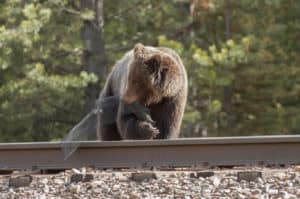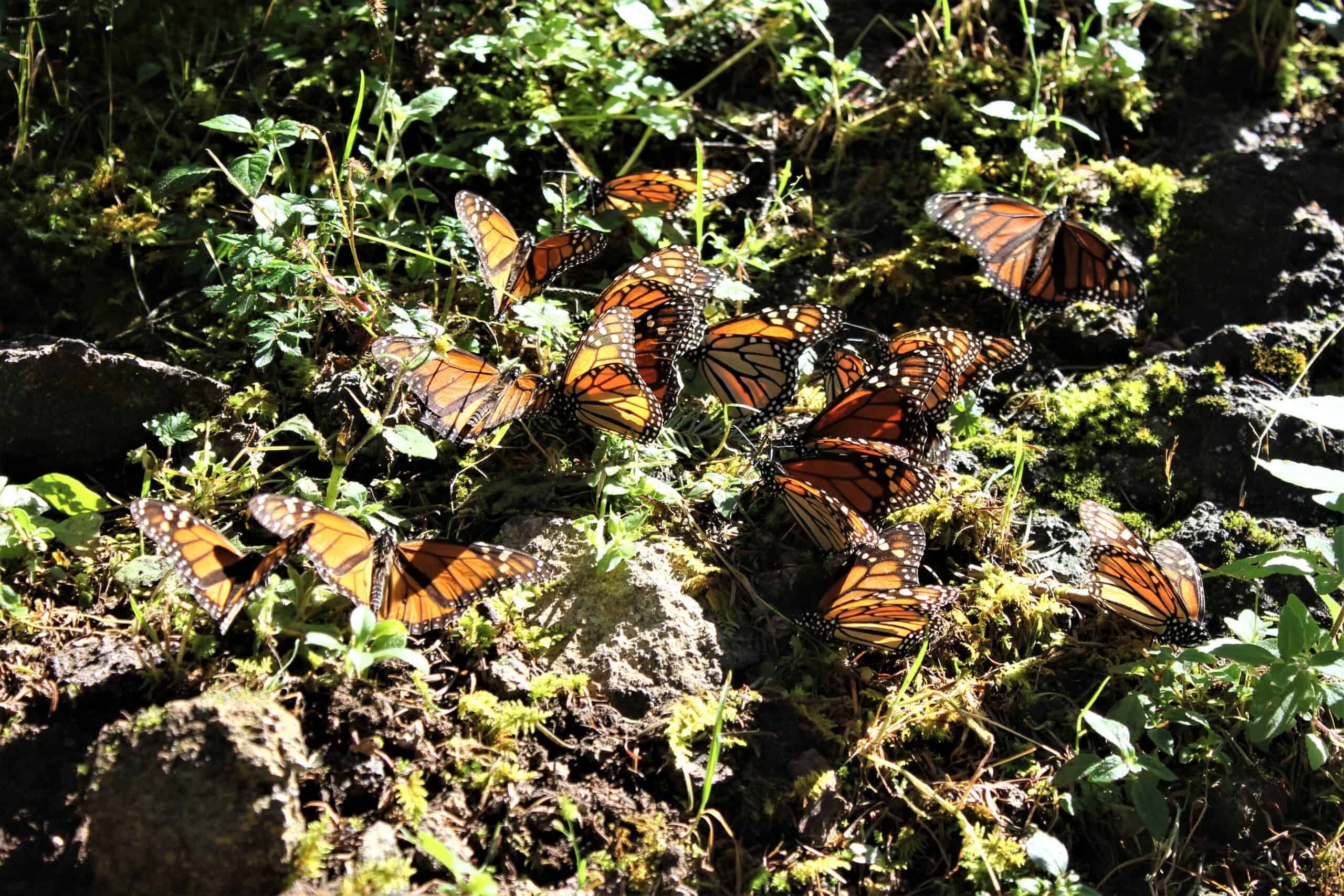Share this article
JWM: Grizzly deaths along tracks occur in surprising places
Grizzlies in western Canada may need to look both ways before they cross the train tracks.
Although grizzlies (Ursus arctos horribilis) have often been witnessed alongside the rails seeking grain spilled from railcars, researchers examining train strikes in Alberta and British Columbia found that the strikes don’t usually occur in places where grain is spilled. Instead, the bears might be struck when they’re crossing the tracks.
“Places where bears showed continuing use of the railway exhibited lower rates of past strikes,” said Colleen Cassady St. Clair, a biological sciences professor at the University of Alberta in Canada and one of the authors of a study published recently in the Journal of Wildlife Management.
Parks Canada, the Canadian Pacific Railway and researchers began to look more closely at the issue after reports of trains hitting bears began to increase over the past 20 years. Some 21 bears have been reported as being struck by the railway in Alberta and British Columbia, mostly in the area of Banff and Yoho national parks, since 1982. While the number isn’t huge, grizzly bears are designated as vulnerable in Alberta and their decline in national parks garnered a lot of public concern.
The researchers’ previous work found that railcars spill about 110 metric tons of grain along the tracks in the region over the course of the year — enough to meet the annual calorie needs of dozens of grizzlies. Necropsies showed that some bears found dead along the tracks had grain in their stomachs.

A bear with trash in its mouth near a railway line. ©Niels de Nijs
The open nature of railway lines also favors the growth of berries eaten by bears.
St. Clair, Sonya Pollock, a PhD student in the former’s lab at University of Alberta, and their colleagues wondered if the way bears traveled railway lines affected their likelihood of getting struck. Using data from 27 grizzlies fitted with GPS collars between 2000 and 2016, the researchers tracked how bears used the rail lines.
They expected that the places where collared bears traveled continuously on the rail, perhaps looking for spilled grain, would predict places where other bears were struck. Instead, the opposite seemed to be true.
Overall, they found, bears spent more time around the tracks in places where slow-moving and parked cars are likely to spill grain — areas with rugged terrain and railway sidings. Yet most known mortalities didn’t occur in those areas.
Instead, researchers speculated that bears are more likely to be killed in places where they were simply crossing the tracks or using it briefly.
“Bears were positively, but not significantly, correlated in their crossing locations with the mortality sites,” St. Clair said.
St. Clair suggested that the slow pace of trains in rugged areas and sidings may give the bears time to avoid getting hit. Bears in those areas may also be warier of trains, she said, while bears that only occasionally cross the tracks may be more likely caught by surprise.
“We think the element of panic is a dangerous one,” St. Clair said.
Why more bears have been struck in recent decades is unclear, but St. Clair thinks it could have to do with larger population patterns, changing bear management, and fluctuations in elk (Cervus canadensis) populations in the area. St. Clair also believes it will be difficult to nail down a specific reason for the uptick. Instead, she and another PhD student, Jonathan Backs, developed a warning system that alerts grizzlies — and other animals — that a train is approaching. The device emits a bell sound and flashing lights 30 seconds before a train comes and can be placed in locations where strikes are more common. The team is using remote cameras to gauge the effectiveness of these devices.
This article features research that was published in a TWS peer-reviewed journal. Individual online access to all TWS journal articles is a benefit of membership. Join TWS now to read the latest in wildlife research.
Header Image:
Grizzly bears have been hit more often by trains in British Columbia and Alberta over the past 15 years.
©Niels de Nijs








